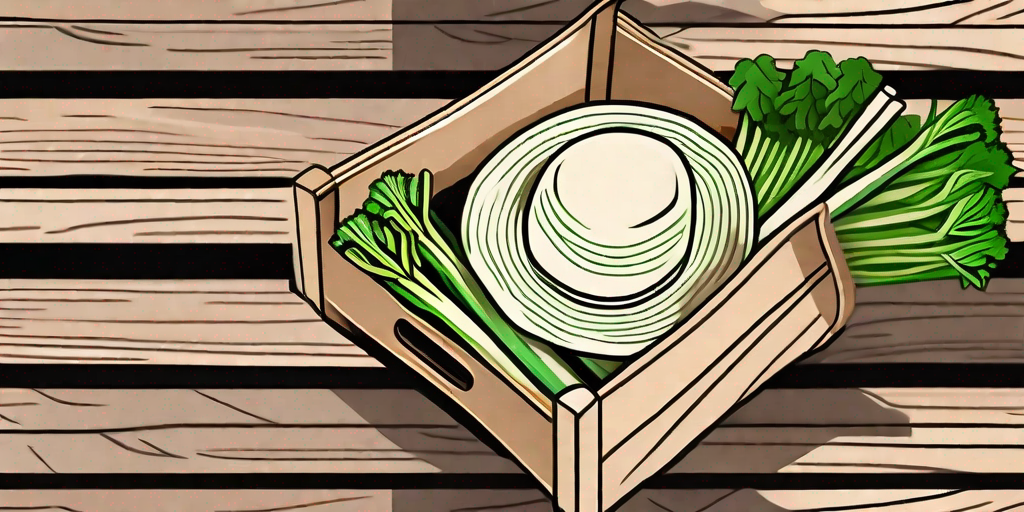
Welcome to the world of celery harvesting, where the stakes are high, the rewards are crunchy, and the fun is never-ending. Whether you're a seasoned gardener or a green-thumbed newbie, this guide will equip you with all the know-how to cultivate and harvest celery like a pro. So, let's dive into the celery trenches and uncover the secrets of the perfect crunch.
The Art of Celery Cultivation
Choosing the Right Variety
First things first, let's talk celery varieties. Like a good wine, the right variety can make all the difference. From the popular 'Pascal' celery with its robust flavor to the peppery 'Redventure,' each variety has its unique characteristics. So, choose wisely, my friend. Your future celery crunch depends on it.
Consider factors like your local climate, soil type, and personal taste preferences when choosing your celery variety. Some varieties thrive in cooler climates, while others prefer a bit of warmth. So, do your homework, or better yet, consult your local nursery for advice.
Planting the Seeds
Once you've chosen your celery variety, it's time to plant those seeds. Celery seeds are tiny, much like the hopes and dreams of a novice gardener. But fear not, with a bit of patience and care, these little seeds will grow into crunchy celery stalks.
Start by sowing the seeds indoors about 10-12 weeks before the last frost. Use a seed tray filled with a good quality potting mix. Sprinkle the seeds on top and lightly cover them with more potting mix. Keep the soil moist but not waterlogged. Remember, celery seeds are like Goldilocks, they like conditions that are just right.
The Secrets of Celery Harvesting
Knowing When to Harvest
Now comes the moment of truth, the harvest. But how do you know when your celery is ready to be plucked from the earth? Well, it's all about the size, baby. A mature celery plant should be about 18 to 24 inches tall. The stalks should be firm and the color should be a vibrant green. If your celery checks all these boxes, it's ready for the big leagues.
However, don't rush the harvest. Patience is a virtue in the celery world. Harvesting too early can result in less flavorful stalks. So, give your celery the time it needs to reach its full crunchy potential.
How to Harvest
Harvesting celery is a delicate process. It's not a time for brute force or hasty actions. Instead, it's a time for precision and care. Start by loosening the soil around the base of the plant with a garden fork. Then, grasp the plant firmly at the base and pull upwards. Voila! You've just harvested your first celery stalk.
Remember to harvest from the outside in. The outer stalks are the oldest and will be the most mature. The inner stalks are still growing and will continue to do so even after you've started harvesting.
Preserving the Crunch
Storing Your Celery
So, you've harvested your celery. Now what? Well, it's time to store it. Proper storage is key to preserving that coveted celery crunch. Start by washing your celery thoroughly to remove any dirt or bugs. Then, pat it dry and wrap it in aluminum foil. Store it in the crisper drawer of your refrigerator. This will keep your celery fresh and crunchy for up to two weeks.
Alternatively, you can chop your celery and store it in a container filled with water. This method also helps to preserve the crunch and can extend the shelf life of your celery.
Frequently Asked Questions
Why is my celery bitter?
Bitter celery is often the result of too much heat. Celery prefers cooler temperatures and can become bitter if exposed to prolonged periods of hot weather. To avoid this, try to plant your celery in a location that receives partial shade, especially in the hotter months.
Can I regrow celery from the base?
Yes, you can! Celery is a regenerative plant, meaning you can regrow it from the base. Simply cut off the bottom inch of the celery base and place it in a shallow dish of water. After a week or so, you should see new growth starting to emerge. Once this happens, you can plant your celery base in soil and watch it grow into a new plant.
Why are my celery stalks thin and spindly?
Thin, spindly celery stalks are usually a sign of inadequate sunlight or nutrients. Make sure your celery plants are receiving at least 6 hours of sunlight each day and are planted in rich, well-draining soil. Also, consider adding a high-nitrogen fertilizer to your soil to promote thicker, healthier stalks.
In Conclusion
There you have it, folks. The ins and outs of celery harvesting. With these tips and tricks, you'll be well on your way to growing and harvesting the crunchiest celery on the block. So, roll up your sleeves, get your hands dirty, and let the celery harvesting begin. Happy crunching!











